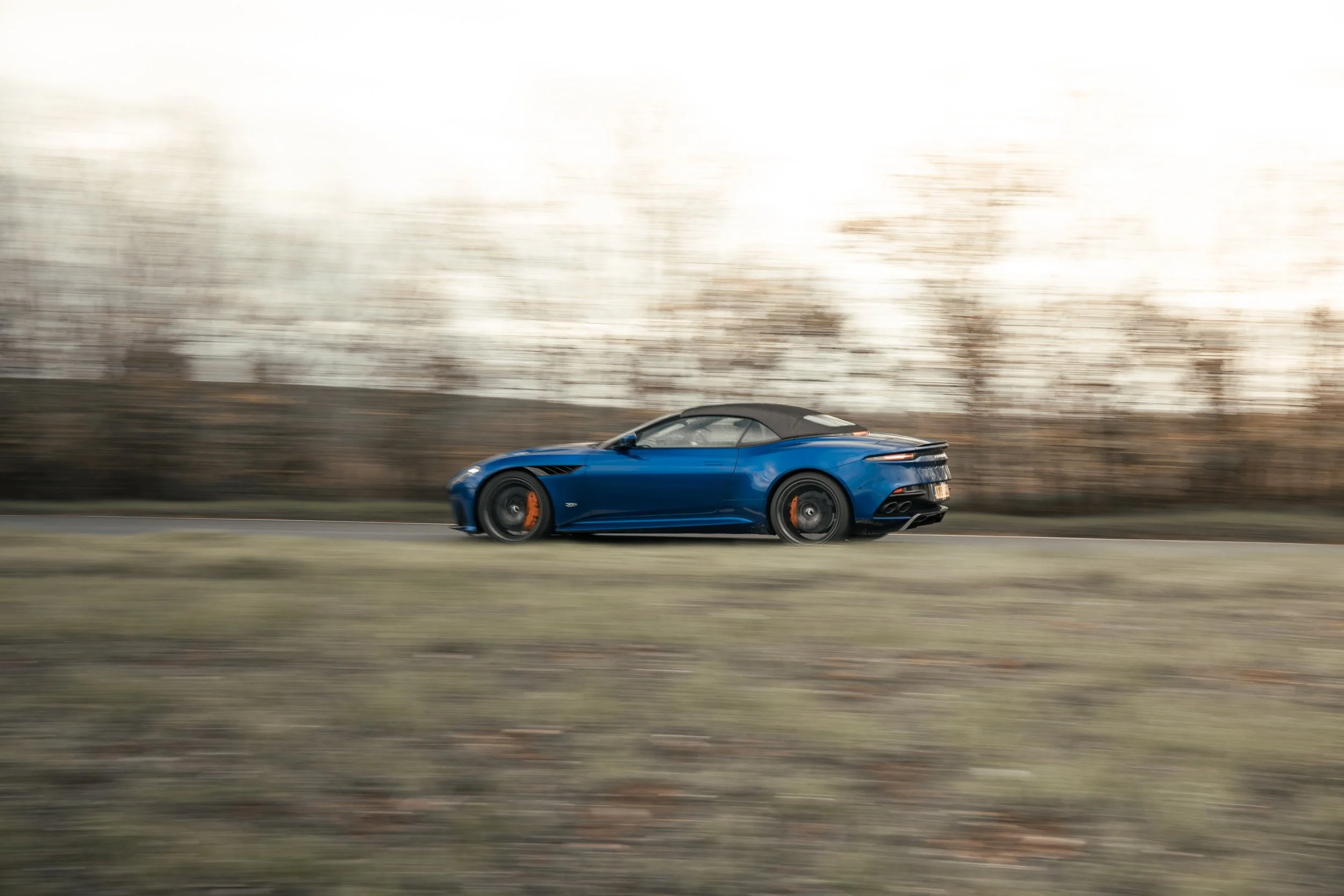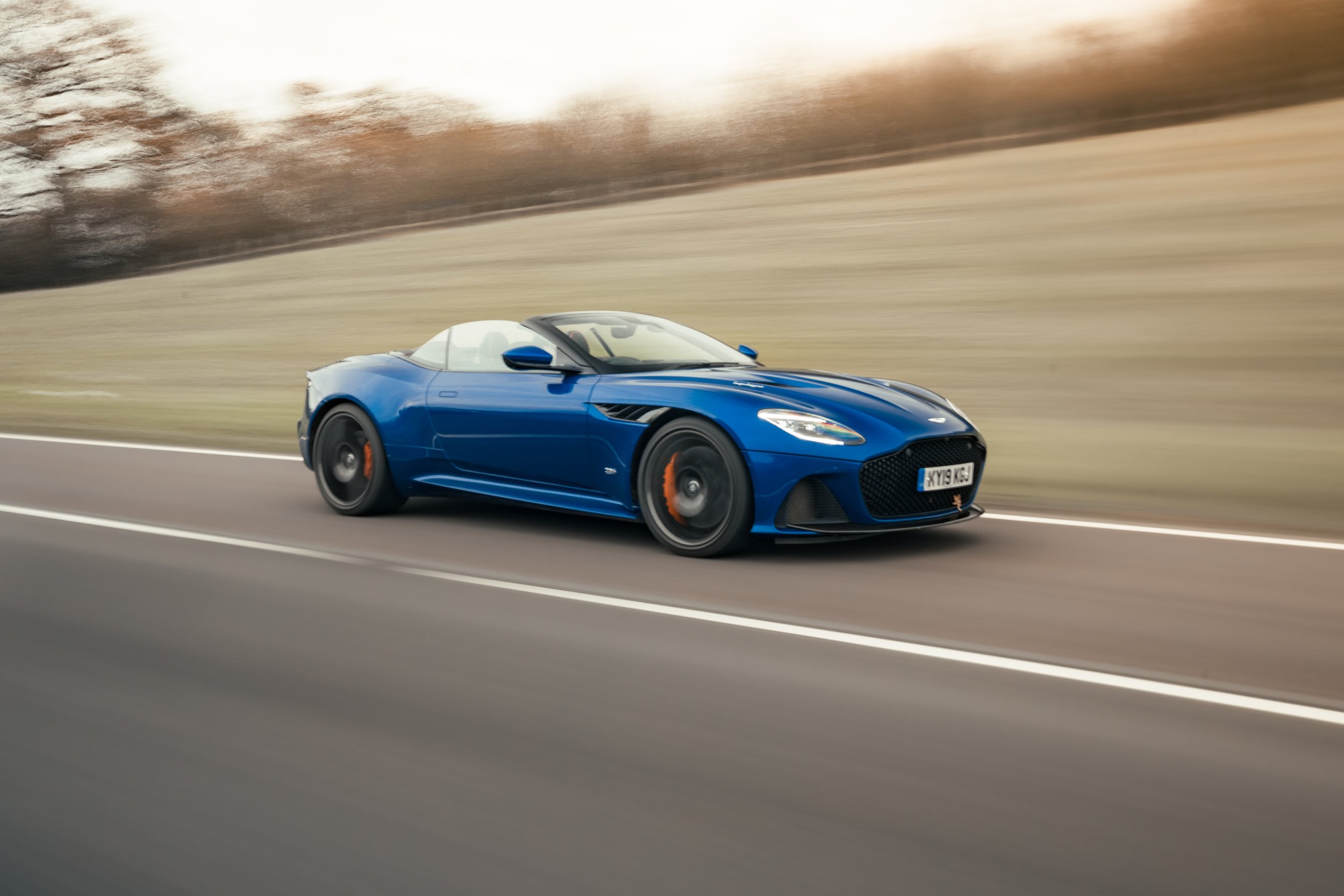
Road Test: Aston Martin DBS Superleggera Volante
Aston Martin brought the Superleggera nameplate back for the 2018 DBS. But can this supposedly ‘super light’ grand tourer cut it as a sports car?
WORDS: Mark Rose | PHOTOS: Harry Hartland
The name Superleggera, or Super light when translated in to English, was a construction technique patented in the 1930s by a coachbuilder called Touring of Milan. When designing the DB4, Aston Martin commissioned Touring to build a lightweight chassis for the car, and it was agreed that the Superleggera nomenclature would grace the production model when it was released in 1959. The construction also underpinned the DB5, DB6, and the ‘all-new’ DBS of 1967 which itself was based on a widened DB6 chassis.
The Superleggera name returned in 2018, not because the Aston Martin DBS is based on an 80-year-old construction technique, but because it pays homage to Astons of old and has been built with a philosophy of lightness. The DBS actually shares many of its underpinnings with the DB11, but extensive use of carbon fibre means it undercuts its sibling by 72kg at the kerb. However, my Volante press car weighs 1,845kg which makes it 100kg heavier than the coupe, a car that itself is more than 200kg heavier than a Ferrari 812 Superfast. The Aston then, is not actually a light car, but a poke around the cabin sheds some light on why.
Step inside and it doesn’t take long to realise the DBS is built to be a grand tourer. It’s a real continent crusher, a long-legged cruiser that will transport you across Europe without breaking a sweat. Aston interiors sometimes come in for a little stick for lacking the quality you would expect from such a prodigious manufacturer, and yes, there are areas that call in to question the car’s £247,500 price, but overall this is a well-executed cabin that’s well built. The leather and carbon fibre trims are exquisite, the electronically operated armrest is unashamedly 007, and the squared off steering wheel with column mounted paddles is oddly intuitive to use.
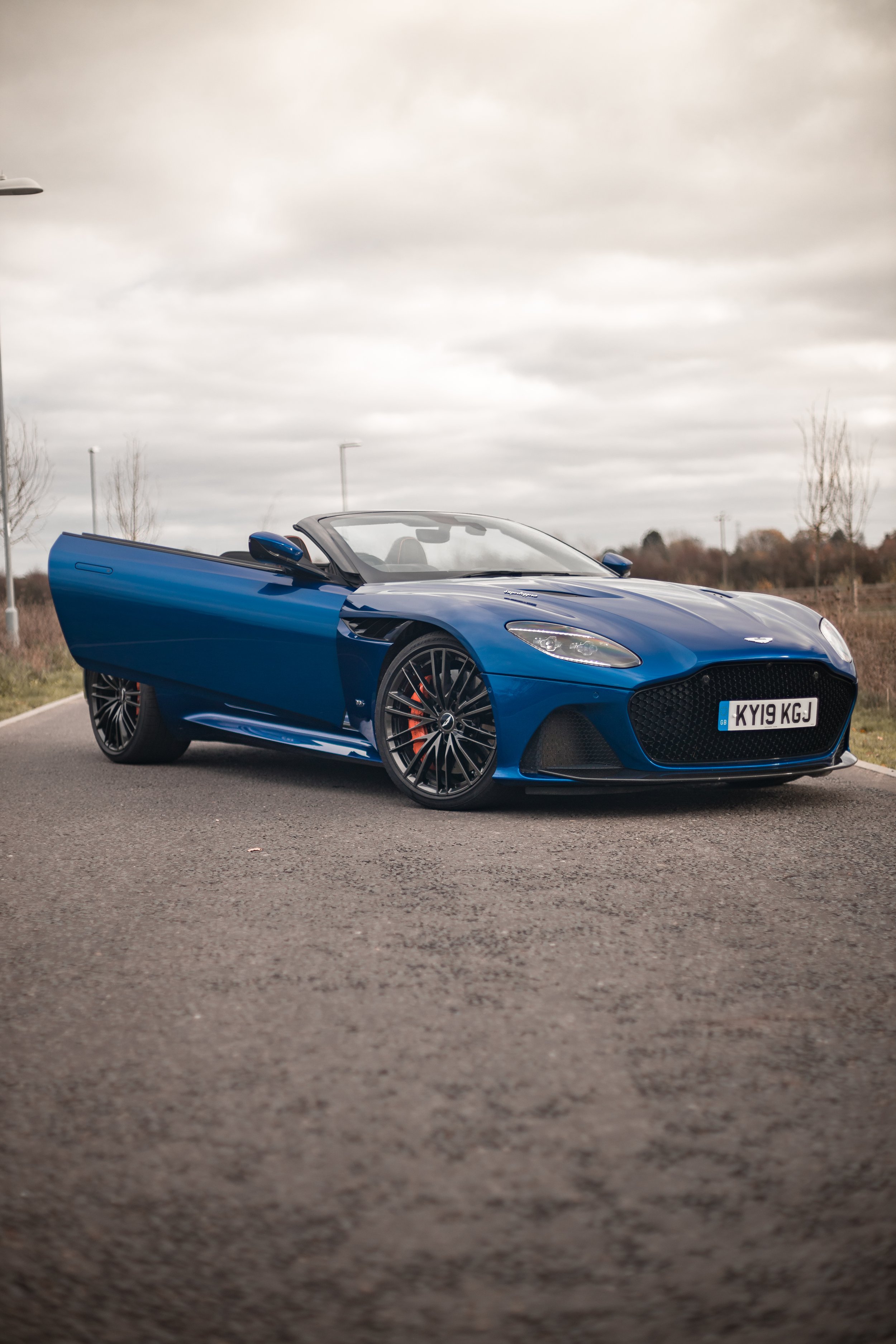
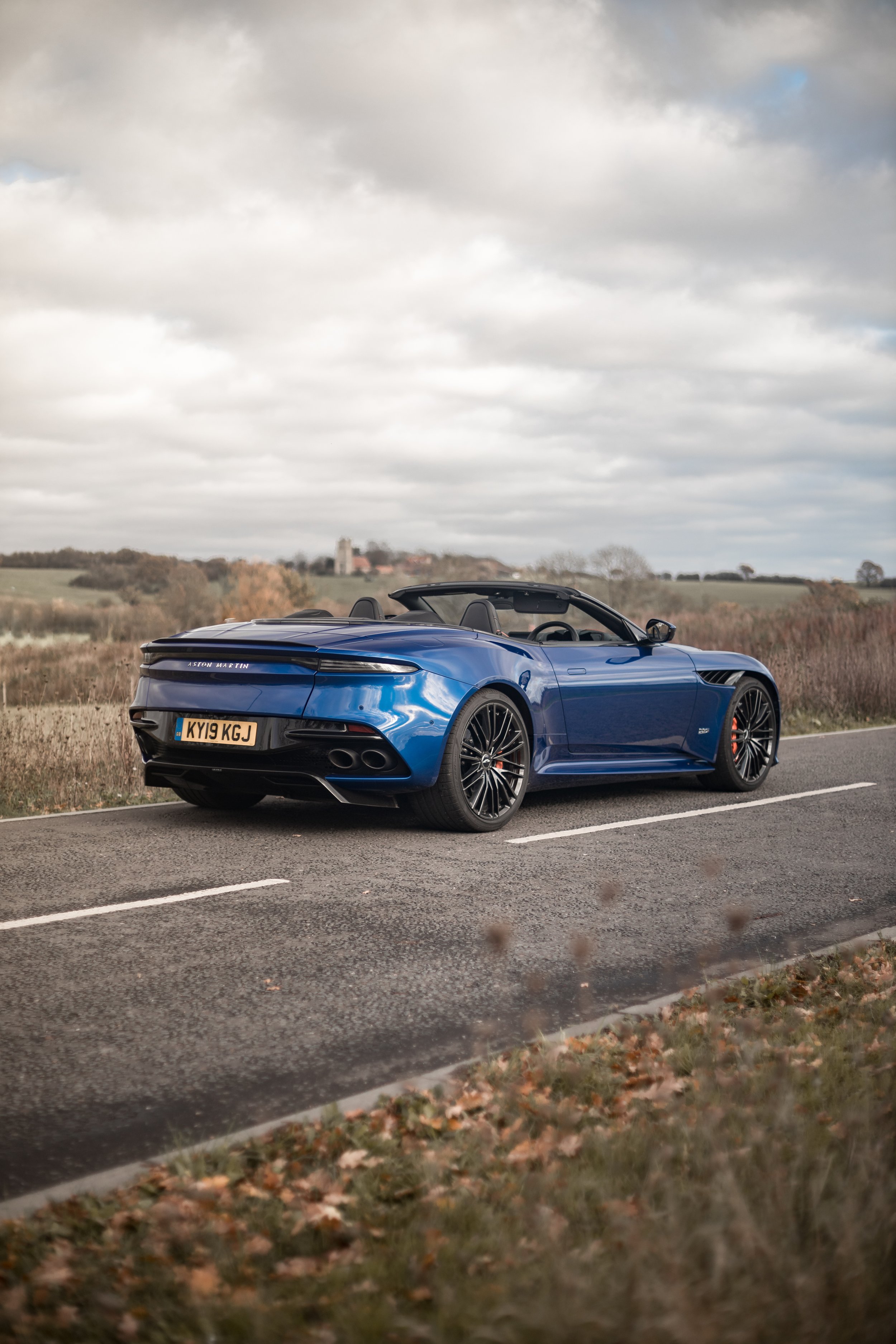
A couple of things to keep in mind, here. I’ve driven mid-engine supercars with better visibility than the DBS. The coupé shape, dinky rear window and large wing mirrors make for a difficult car to see out of. Obviously much of this problem is solved by folding the roof away, but we live in Britain so the weather often puts an end to that solution. Another thing to consider is the infotainment. It’s all previous generation Mercedes gear complete with the clickwheel control. A few years ago, Mercedes bought a share in Aston Martin and donated their AMG V8 along with their old in car tech. While we have no problems with cash injections and parts sharing arrangements, we do take issue with infotainment graphics that don’t belong in a car with such a considerable starting price. An upshot of the clickwheel setup, however, is the functionality it brings to controlling the system. Handy, when you have 715bhp and two driven wheels to negotiate.
The Superleggera may be a comfortable super-GT, but the attention to keeping the weight down means it will run rings round a Bentley Continental GT, dynamically and in terms of performance. No AMG engine here like in V8-powered Astons, the twin-turbo 5.2 litre V12 is their own and it dominates the driving experience. The power and torque figures place it in a category of performance reserved for some of the fastest road cars money can buy. 715bhp, yes, that’s seven hundred fifteen brake horse power, and a tarmac twisting 663lb ft. Our Volante model completes the zero to 62mph sprint in 3.6 seconds, roof down it will run to 211mph, and with the lid on it will edge out 215mph. Aston Martin purposely gave the DBS a shorter final drive ratio to increase acceleration, and wow does it pick up some pace, providing you can get the power down. In anything other than bone dry conditions, the rear wheels struggle to get the power to the road, and you regularly find yourself short shifting before the torque spikes and spins the rears up again. Get it hooked up properly and it fires towards the horizon at a truly alarming rate. It doesn’t accelerate with the same urgency as a McLaren 720S (little does), but it comfortably runs with a Lamborghini Huracán Evo, and it outstrips both of them when it comes to top speed.
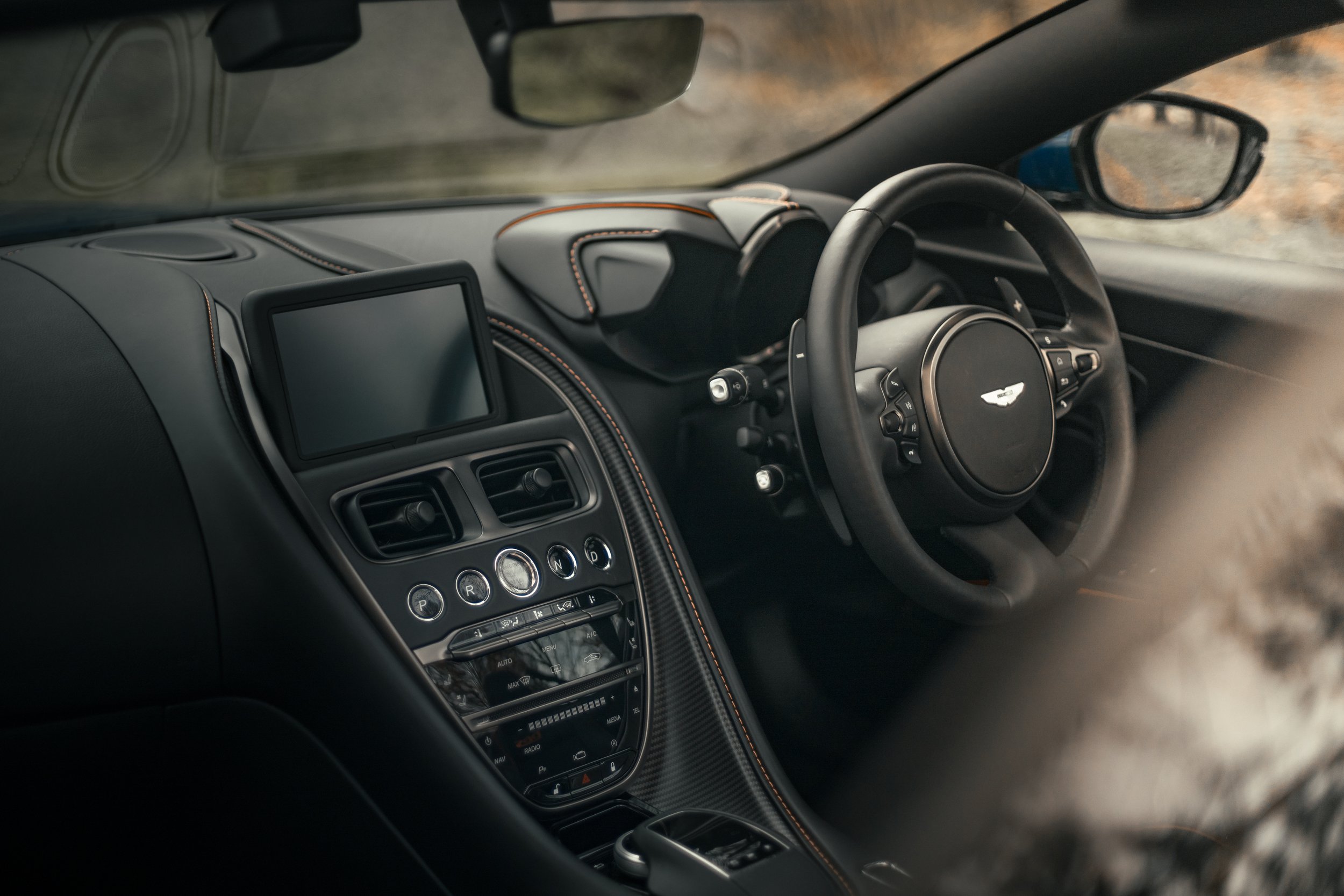
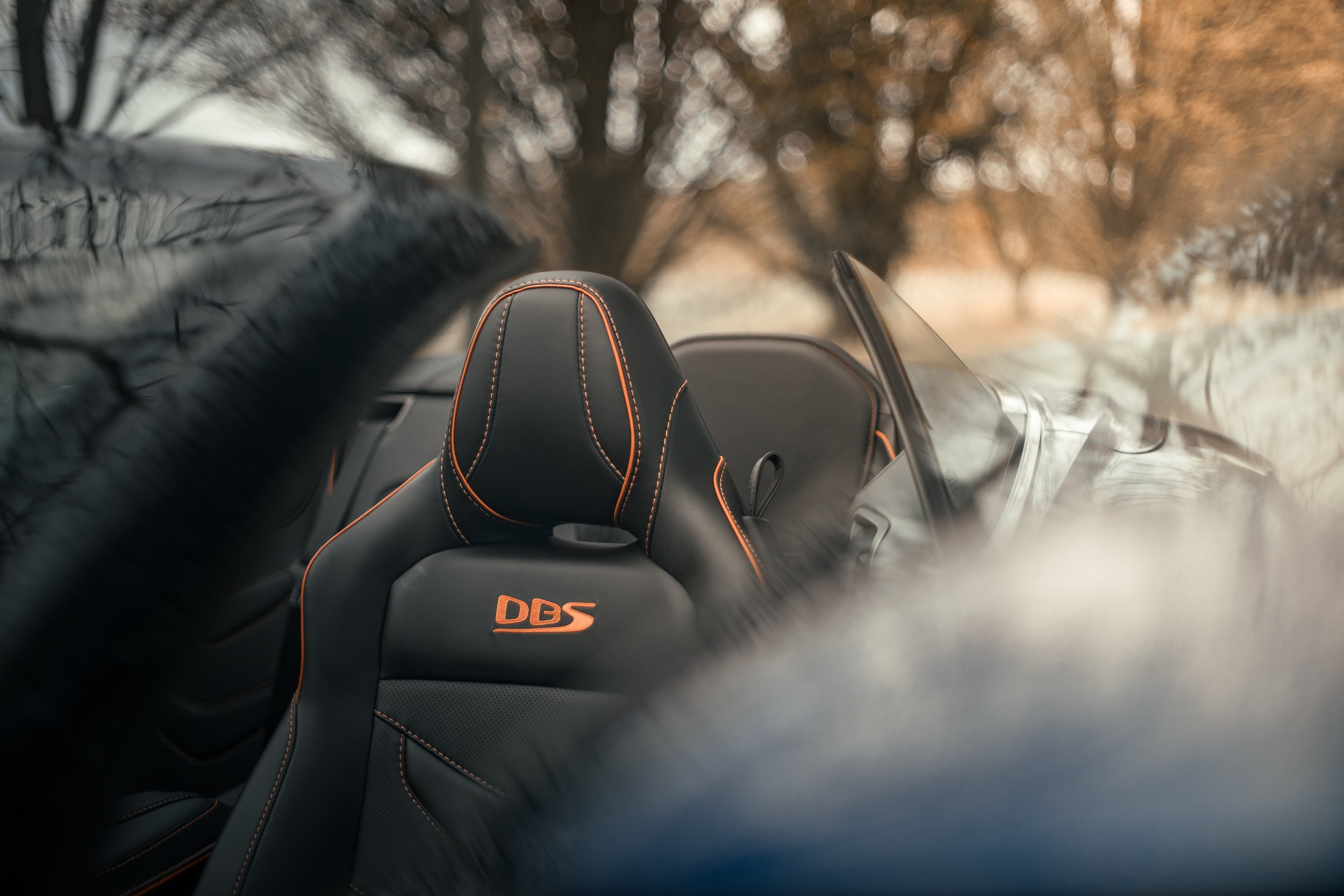
The engine’s greatest asset, however, is not the power and torque it produces, but the sound. Hood up and you’d be forgiven for thinking the V12 is rather muted, but with the cloth roof stowed away your ears become exposed to the delight of 12 cylinders doing their thing. If the interior sometimes leaves you wondering where your hard-earned quarter of a million quid went, then the richness of the motor reminds you that it was money well spent. It doesn’t shout about its superiority over lesser forms of internal combustion, instead, it’s a soundtrack that exudes class and politely reminds those who hear it, that they are subjects in the presence of automotive royalty. It’s arguably at its finest when you glide through town, and listen to it echo down streets and reverberate off shop windows.
If you want a little more edge to your soundtrack, then you can use the driving modes to add some pops and crackles to the exhaust. Nothing obnoxious, just another layer of character. When it comes to modes, Aston Martin has seen fit to offer the driver real options with GT, Sport, and Sport + modes, and the ability to configure your damping separately from your engine mapping. The optimal set up is the powertrain in Sport + and the damping left in its softer GT setting, that way, you benefit from the sharper throttle response and throatier exhaust, but you gain the additional compliance from the softer ride.
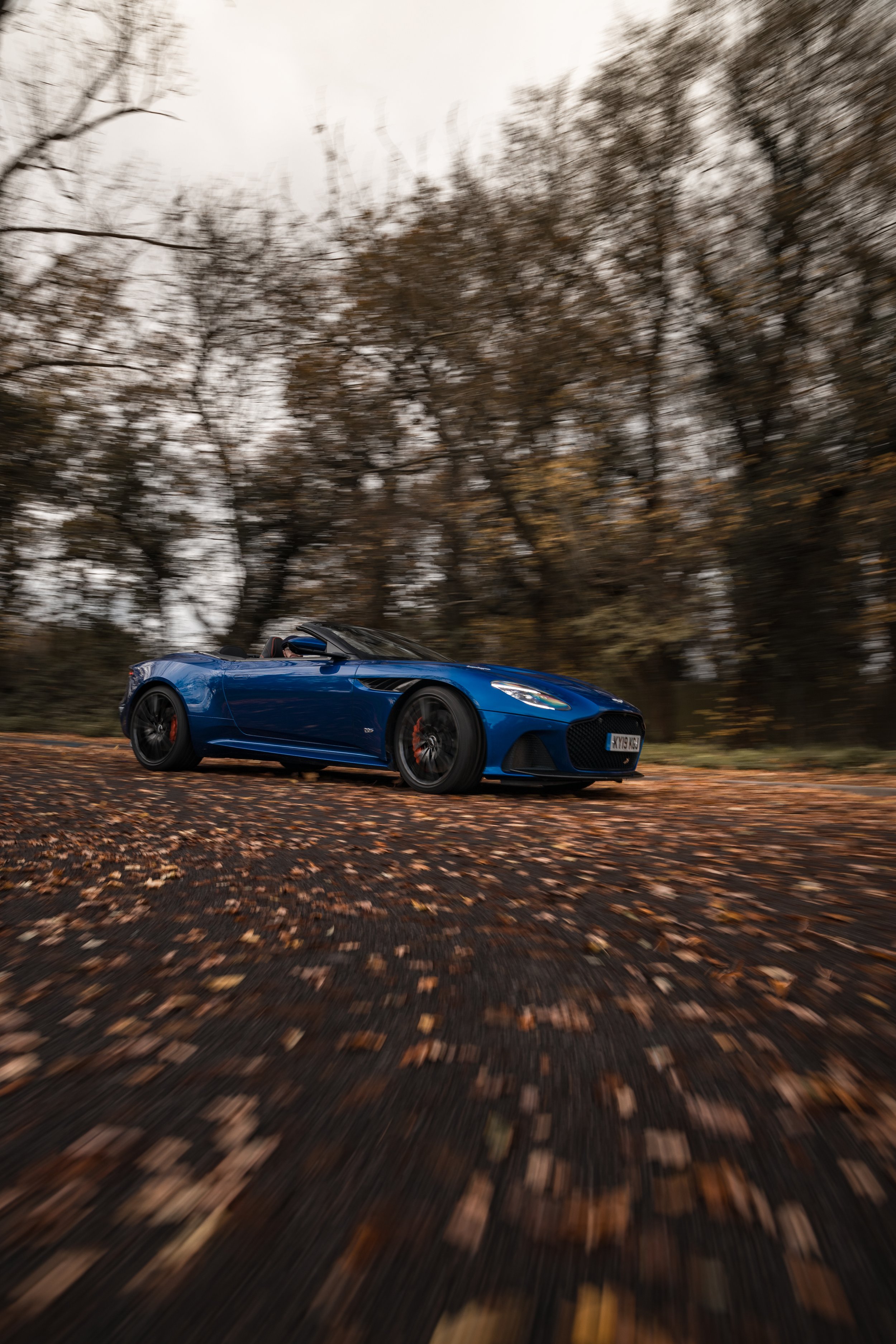
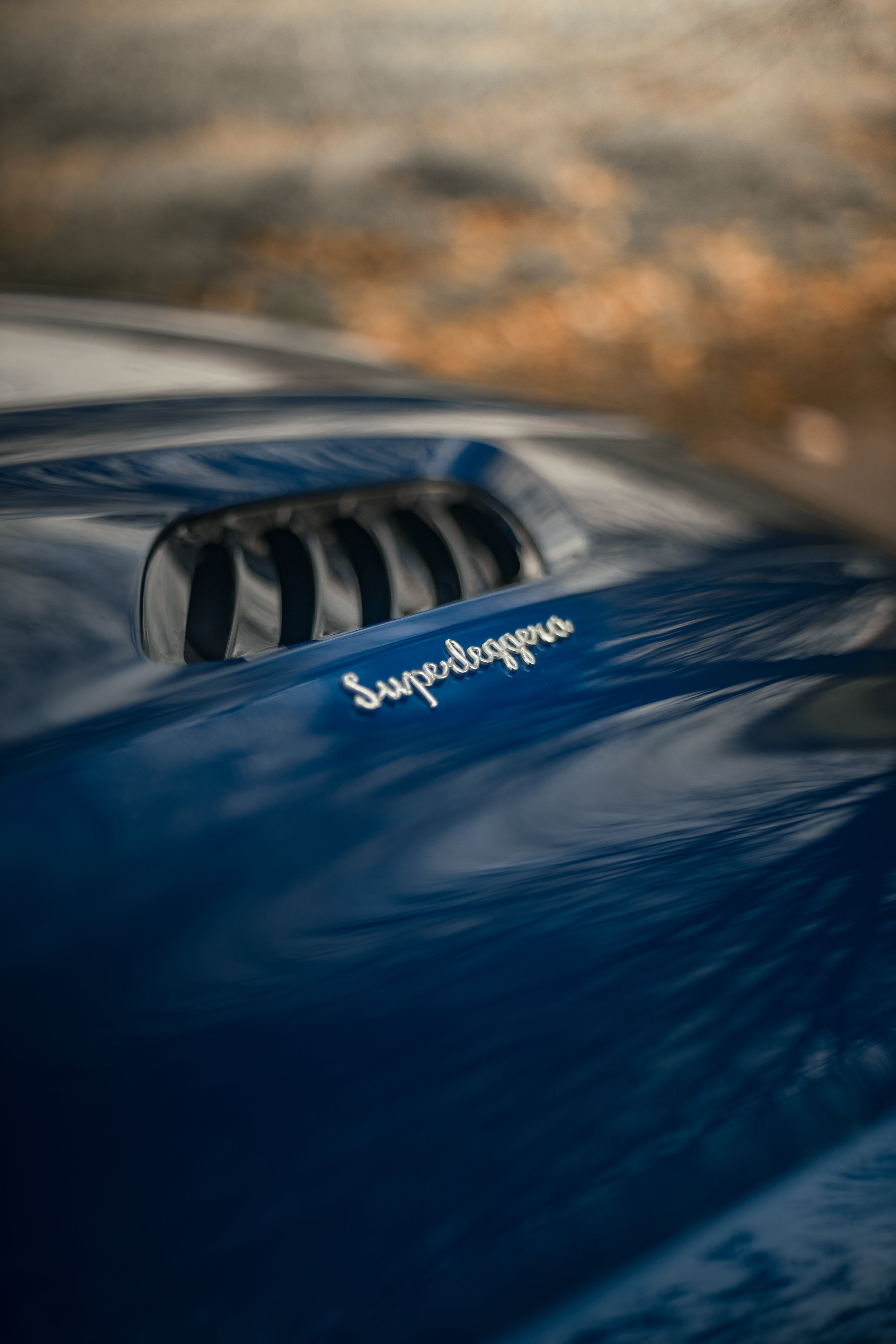
Convertible GT cars can often fall victim to the loss of structural rigidity brought on by the lack of a fixed roof, and Aston Martin has combatted this by strengthening the chassis structure, but sometimes even a manufacturer’s best efforts aren’t enough. That’s not the case in the DBS Superleggera Volante. The chassis is so rigid you don’t feel any of the flex normally associated with a sporty convertible, just a tight, well-balanced package that entertains and is easy to build rhythm with. The front-mid engine layout with the gearbox positioned behind you also lends the DBS fantastic weight distribution. The nose neatly tucks in to corners, the rears follow faithfully, and even though the chassis feels stiff there’s still enough roll to communicate how much grip you’re using. The steering also has a lovely heft to it. It doesn’t brim with feel or feedback but it loads up nicely as you turn the wheel and allows you to accurately place the car on the road. The carbon ceramic brakes measure 360mm at the rear and a colossal 410mm at the front. At first acquaintance they can feel a little grabby, but they offer huge stopping potential and continue to perform free of fade when you really get stuck in to your driving. The eight-speed automatic gearbox is well measured. It doesn’t shift as quickly as the transmissions you’ll find in purpose-built supercars, but on the other hand, it quietly slips through the cogs when you’re just cruising along.
The Volante really comes in to its own when the weather is fair, the roads are smooth and the journey long. It may not be as luxurious or posses quite the same appetite for long distance traveling as a Bentley Continental GT, but the Aston is still a consummate grand tourer. The seats hug you, the ride is smooth and the overall refinement is excellent. Interference from the wind in the cabin is also low, particularly with the windows ups. The rear seats remind me of those in a Ferrari Portofino. Not really big enough for additional passengers but useful for carry on luggage. The fabric roof does take up a fair amount of boot space when folded away, making the 2+2 configuration somewhat of a life saver. Because no one, wealthy or otherwise, goes cruising across continental Europe without bringing back souvenirs.
Objectively, the Aston Martin DBS Superleggera Volante is somewhat of a Swiss Army knife. It’s supercar potent but it can be used every single day, it’s GT-car comfortable but is armed with genuine dynamic ability, and because it’s the flagship Aston it carries with it a level of cool that few other cars can match. It makes you look good, if you’re in to that sort of thing. But to view the DBS objectively is missing the point. This is a car with a soul that provokes an emotional reaction. To observe it parked up is an event in itself. Muscular yet elegant, bold but beautiful. It is an achingly gorgeous thing to look at. But to drive it with the roof folded away and that wonderous V12 engine singing ahead of you, offers an experience and feeling that few other cars can replicate.
Technical Specifications
Engine: V12, twin-turbo
Displacement: 5,204cc
Power: 715bhp @ 6,500rpm
Torque: 663lb ft @ 1,800rpm
Transmission: 8-speed auto, RWD
0-62mph: 3.6 secs
VMAX: 215mph
Kerbweight: 1,845kg
Price: £247,500 (when new)
8/10
Rating
“The engine’s greatest asset, however, is not the power and torque it produces, but the sound”
